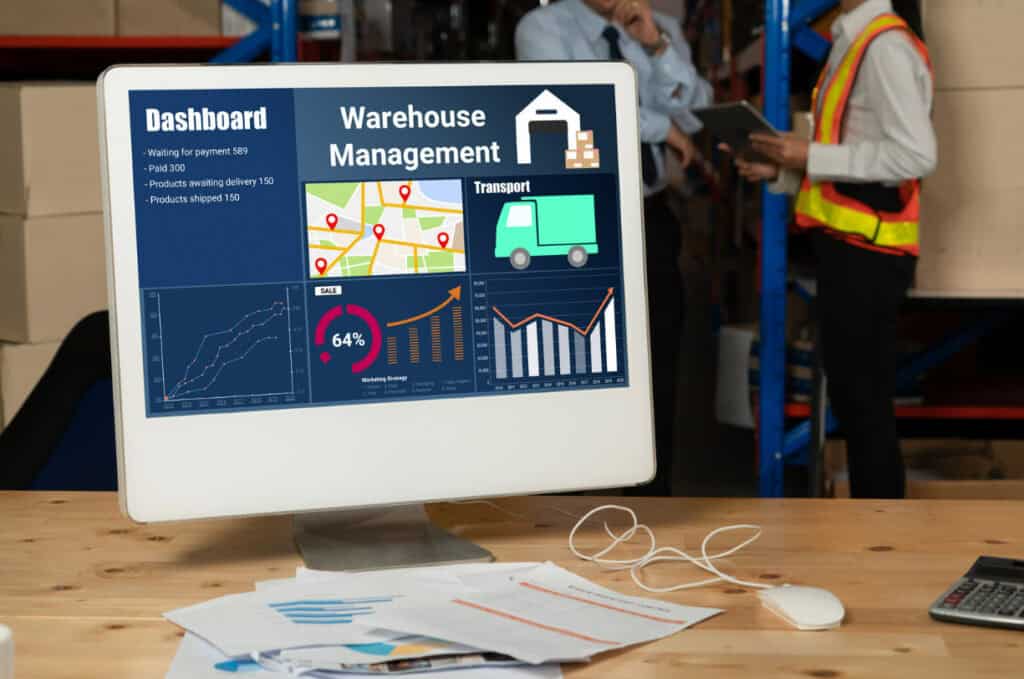The success of a business depends in large part on effective inventory management. However, many businesses struggle with common challenges such as overstocking, stockouts, and inaccurate inventory counts.
Table of Contents
These issues often stem from relying on manual processes, which are both slow and highly error-prone. Manual tracking requires constant attention to detail, and even the smallest mistake can lead to significant discrepancies that ultimately affect the bottom line.
Many successful businesses today have overcome these difficulties by adopting new technology—particularly integrated systems that combine point-of-sale (POS) and enterprise resource planning (ERP) solutions.

When an organization’s POS system and ERP system can communicate seamlessly, it becomes possible to update inventory levels in real time with accurate sales data. As a result, businesses can make more informed decisions, reduce waste, and enhance overall efficiency.
Let’s take a look at some of the key benefits businesses can unlock by integrating their POS systems with real-time inventory tracking or Enterprise Resource Planning (ERP) solutions:
Real-Time Updates
Imagine knowing exactly how much inventory is available at any given moment without having to manually check each item. This is one of the most immediate benefits an integrated POS-ERP system can offer.
Every sale made through the POS system is instantly recorded in the ERP system, which in turn updates inventory levels automatically in real-time. This ensures that businesses always have an accurate picture of their stock levels and prevents the common issues of overstocking and stockouts.

POS-ERP integration also grants businesses visibility into inventory levels across all locations. This helps teams manage stock more effectively and supports better decision-making.
For instance, if a particular product is selling faster than expected, managers can quickly reorder stock to meet demand. Conversely, if sales are slower than anticipated, they can adjust marketing strategies or run promotions to move inventory.
More Streamlined Operations
Running a business involves juggling numerous tasks, and inventory management is one area where efficiency can make a major difference. POS-ERP integration automates many of the manual processes that traditionally bog down operations.
For example, the system can reduce or entirely eliminate the need to perform manual data entry, since it updates inventory records by itself right as sales occur. Streamlined operations lead to reduced errors and increased efficiency.
When staff members are not bogged down by tedious manual tasks, they can focus on more strategic activities that drive business growth.
Furthermore, synchronization between sales and inventory data guarantees that all departments—from procurement to warehouse management—are working with the same accurate information. This prevents miscommunications and keeps operations running smoothly and efficiently.
Cost Savings
Every penny a business manages to save ultimately contributes to the bottom line. Integrated POS-ERP systems can lead to significant cost savings by improving a company’s inventory optimization capacities.
By maintaining accurate, real-time data on inventory levels, businesses can avoid the pitfalls of overstocking, which ties up capital and increases holding costs. Likewise, they can prevent stockouts, which can result in lost sales and dissatisfied customers.
In addition, integrated systems reduce waste, particularly for businesses dealing with perishable or seasonal goods. Businesses can closely monitor inventory levels and sales trends, then adjust their purchasing strategies to match demand more accurately.
This reduces the risk of holding onto excess stock that may become obsolete or unsellable, ultimately leading to lower storage costs and less financial waste. These cost-saving measures contribute directly to improved profitability and financial health.
Enhanced Reporting and Analytics
Informed decision-making lays the foundation for successful business management. An integrated POS-ERP system boosts a company’s ability to make data-driven decisions by a significant margin.
These systems come equipped with robust reporting and analytics features that provide detailed insights into inventory trends, sales performance, and customer preferences. With access to such comprehensive data, managers can analyze patterns and identify areas for improvement more effectively.

Enhanced reporting and analytics also enable businesses to plan more strategically. Understanding which products are most popular during certain times of the year can help in forecasting demand and planning inventory purchases accordingly.
Furthermore, detailed analytics can reveal inefficiencies in the supply chain or highlight opportunities for cost savings. Access to such insight in turn empowers businesses to optimize their operations continuously.
Improved Customer Service
Modern businesses are under more pressure than ever to create a satisfying experience for their customers. Accurate inventory tracking helps make this possible by providing businesses with up-to-date information on product availability, which is essential for providing excellent customer service. Whe
n customers are assured that the items they want are in stock and can be delivered promptly, their overall shopping experience greatly improves. Accurate inventory tracking also enhances order fulfillment processes. With real-time updates, businesses can process and ship orders faster.
Having a reliable system in place also allows customer service representatives to provide accurate information regarding product availability and order status. All these facets, working together, keep products moving smoothly and quickly from the selling floor to the customer’s doorstep.
Real-Time Inventory Tracking and The Future of Business
POS-ERP integration positions businesses to overcome the difficulties of inventory management with greater ease and precision.
The strategic advantages that companies stand to gain can propel them forward and encourage new heights of growth in an ever-evolving market landscape. In the end, it’s no secret that a business’s efforts to streamline its processes today can unlock new opportunities for success tomorrow.



